
RESEARCH
Understanding human-wildlife interactions in the Darjeeling Himalayas
Darjeeling is an important bio-geographic link between Nepal, the Indian State of Sikkim, and Bhutan, extending into Assam and Arunachal Pradesh in the Northeast India. It also significantly represents important ecoregions such as the Himalayan subtropical broadleaf forests, Eastern Himalayan broadleaf forests, and the subalpine conifer forests.
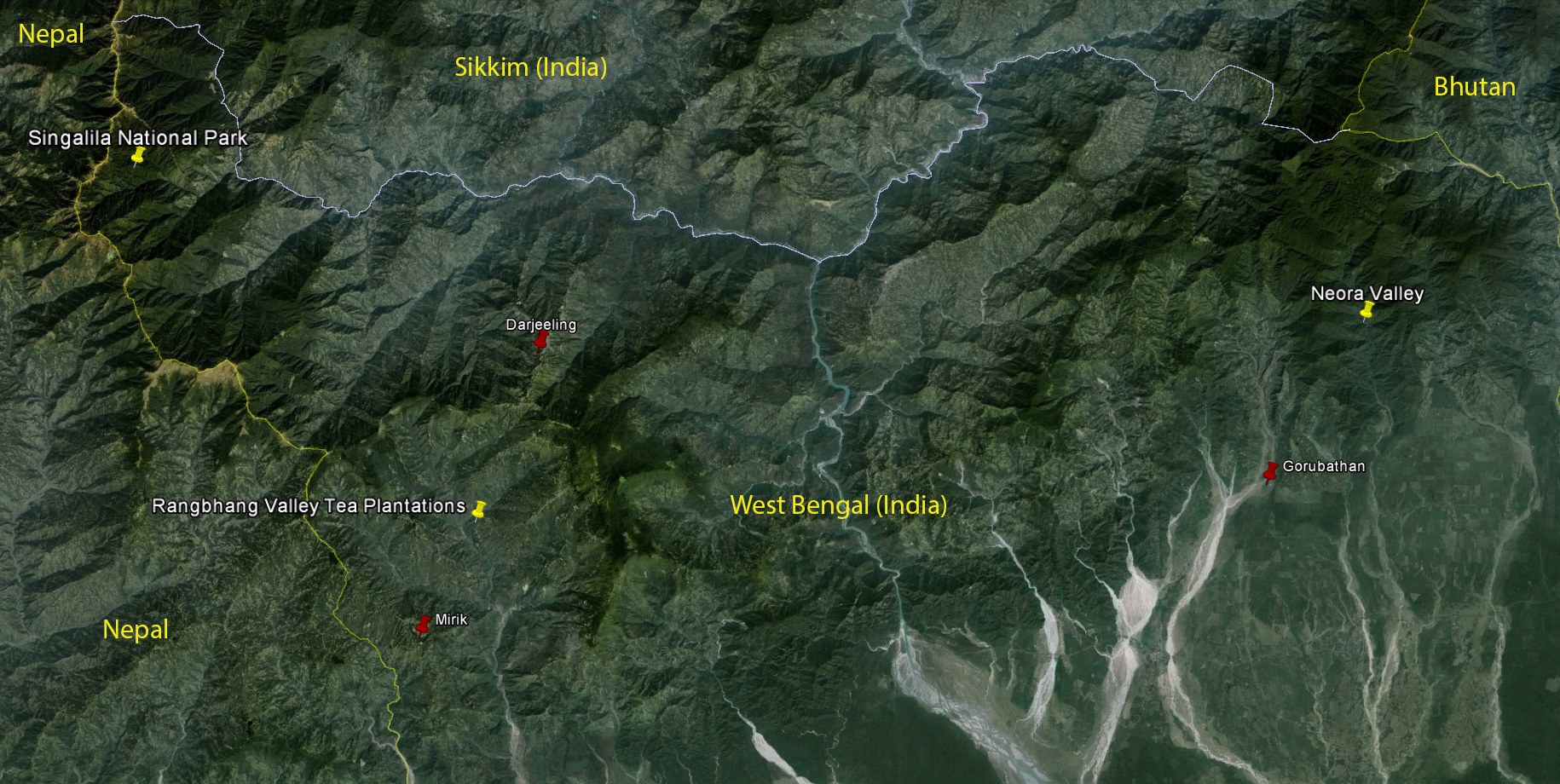
With an indicated forest cover of almost 40%, Darjeeling has a rich biodiversity and is home to some of the globally threatened species such as rufous-necked hornbill (Aceros nipalensis), the critically endangered Chinese pangolin (Manis pentadactyla), and the vulnerable red panda (Ailurus fulgens), along with many other wildlife species of conservation significance. Darjeeling, however, is also home to 1.85 million people, with a population density of 512 people/sq. km, receives more than 0.5 million tourists annually. It is one of the poorest in the entire Indian Himalayas, strewn with political conflicts and uncertainty for last 30 years.
Amidst such human-related challenges, we are yet to understand the interactions among the different aspects of human society and natural elements in the context of wildlife conservation. ATREE currently has three projects in the Eastern Himalayas that are trying to fill this knowledge gap. In the temperate and subalpine conifer forest landscape of Singhalila, we have assessed the challenges to tourism in its contribution to red panda conservation. Based on these understandings, we now assess tourism in red panda habitats of other mountain parks of Darjeeling and Sikkim Himalayas to generate adequate information across the red panda landscape. We have also initiated action based on the findings, and now working towards capacity building for 100 local guides, through a 'Training of Trainers' program in Singhalila.
The production landscape of tea plantations in Darjeeling forms a formidable part of Darjeeling’s geographical area with several protected areas adjoining the tea plantations. We are trying to understand the wildlife conservation in these tea plantations which are 'areas outside protected areas'. Although an important economic backbone for the region, wildlife conservation is not a priority of the tea plantations. To better understand these interactions, we have just completed the field work in the first phase of our project “Conservation of the Chinese pangolin in the tea plantations of Darjeeling Himalaya”. Chinese pangolin is an evolutionarily distinct and critically endangered species. The species is heavily threatened due to large scale hunting for its high commercial value in the food and medicinal market, aggravated by rapid urbanisation, leading to habitat loss, use of agricultural pesticides, customary subsistence hunting by locals for food and medicine.
The lowland forests of Darjeeling, encompassing the Himalayan subtropical broadleaf forests of Neora Valley National Park and its adjoining areas, is a largely human dominated landscape where we are assessing people-wild fruits-hornbill interactions. The landscape has five recorded species of hornbills—rufous-necked hornbill Aceros nipalensis, great hornbill Buceros bicornis, oriental pied hornbill Anthracoceros albirostris, wreathed hornbill Rhyticeros undulatus, and the Indian grey hornbill Ocyceros biostris—dependent on the same available wild fruit resources, also used by the local communities. Field work is in progress. All these initiatives across Darjeeling Himalaya seek to understand, analyse, and unravel aspects of nature-society relationships, and find linkages, patterns, and processes for specific pathways to effective management of human-wildlife interactions.
|
The Dal: Reviving beauty
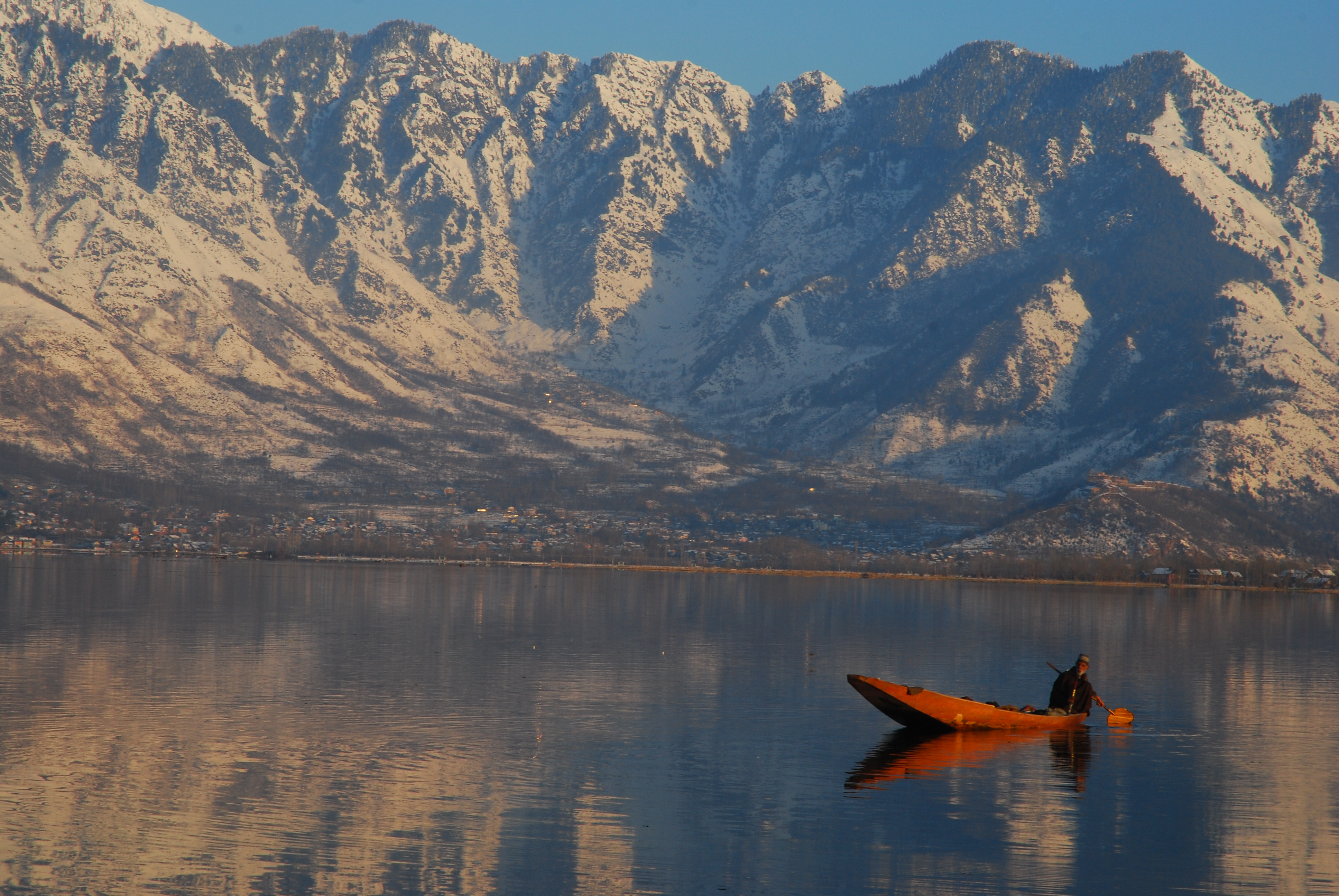
The Dal lake with the Mughal Gardens on its shore, and the mountainous backdrop, is a gift of nature and a UNESCO World Heritage site. Amir Khusrow, who lived in the fourteenth century is reported to have said about the lake and its surroundings “if there is a paradise on earth, it is here, it is here, it is here”. As such, the lake and its surroundings attract hordes of visitors from various parts of the country and abroad. These visitors contribute significantly to the local and state economy, but their footprint also has significant negative consequences for the lake ecosystem. In spite of these pressures, even in its somewhat diminished state today, the Dal exudes a charm.
Over the years concerns have been expressed about its state. Only in the past decade, these concerns have translated into measures to arrest the negative consequences of human use and abuse. The central and state governments have shown they are serious about addressing the drivers of negative change, and have allocated significant resources to tackle these problems.
This is a welcome development.
In this context, the United Nations Development Programme (UNDP) funded a scoping study, which was led by ATREE in partnership with the University of Kashmir, to review past initiatives as well as carry out its own rapid assessment in order to develop a strategy and action plan to further enhance the integrity of the Dal ecosystem.
Based on a multi-disciplinary approach, the team—led by ATREE’s Director—has made a number of specific action-oriented recommendations that include setting up a:
- more participatory and decentralised system for decision making, with the mohalla as the governance unit
- Livelihood Learning school with the assistance of the National Skills Mission, to provide relevant vocational skills to local youth and displaced adults
- Green Fund for enterprise development
|
- long-term monitoring mechanism that includes scientists as well as local school students, using citizen science to build support for conservation measures
The state government and UNDP will discuss the findings of the report and consider the suggestions before deciding on an effective plan of action.
The complex name-game
Ecological research is often associated with the discovery of new species of plants and animals. However, these discoveries existed much before being explained. We scientists merely name and describe it, because we humans believe that every organism should have a name and of course serve a particular purpose.
I too named a plant, of course with the purpose of getting a diversity value for a permanently monitored plot where the plant was collected. Out of over a hundred plant species from a hectare area, one particular set of plant challenged me in assigning a name. For over ten years, I referred to dried plant collections in the national herbaria and the flora from India as well as neighboring countries. It was not so easy for a research scholar in taxonomy then to visit a herbaria located in Missouri Botanical Garden, St Louis, USA or Kew, London. However, by the end of my tenth year in this field, an opportunity fell on my lap in the form of a type collection scanning assignment at Kew, with an opportunity to visit Natural History Museum (BM), London. There in BM, I stumbled upon two collections by Col. R. H. Beddome, similar to the one I had with me for over a decade without a ‘validly published’ name. I was so excited to see S.Tinnevelly, Singampatty hills (part of Kalakad Mundanthurai forests where I collected my sample from) on the label of collection. Second one was Courtallam hills, further north of Singampatty hills. However, R.H. Beddome had failed to name the plant, and so did J.S. Gamble, who named many plants from the collection of the former. So I strived to give the plant its due identity, which according to its label in BM was received was back in 1885. And with Beddome’s name already attached to yet another Litsea, I preferred to name the plant based on the location I found it in –Kakachi– and latinized the species name as kakachensis.
While the Western Ghats is globally acclaimed for being ‘botanically well explored,’ may be comparatively, I would claim WG flora is ‘not taxonomically well explored’ in the sense that majority of species have not been critically studied and ‘globalized’ with a name that is not challenged by taxonomists globally.
|
Globalizing of Indian plant names will be possible only through a combination of systematic revisions with classical taxonomic expertise, aided by molecular tools. Through this process we could not only get to know the antiquity of evolutionary paths Indian plants have straddled over millions of years but also its name and uses. In reality, doing classical taxonomy is difficult than using molecular tools as the former needs access to herbarium collections and literature that date back a few hundred years. Except for Indian plants, accesses to plant name catalogues and herbarium collections from databases of rest of the world are made possible by a simple click of the mouse. Databases with curated checklists, images of herbarium and live plants, and eflora contributed by professionals and enthusiasts could speed up the process of documentation of India’s floristic wealth. Such efforts will also being about a sense of ownership among the society as they are given ample opportunities to know the ‘valid name’ of a plant which will be automatically linked to its economic potentialities. This will encourage citizens to track threats to the habitats of such species and take appropriate measures to save them.
India Biodiversity Portal (IBP), a collaborative effort between partner organizations such as Strand Lifesciences, Bangalore and French Institute, Pondicherry, is collating information about India’s biodiversity. Being an open access portal, IBP’s contents are sourced from experts as well as enthusiastic individuals and curated by experts before it is made public. There are around 50 taxa / group based citizen groups, who as collectives, actively participate in contributing to this portal. By fostering organic linkages between amateur collectors and taxa experts, IBP has contributed greatly to naming organisms (e.g., spider). Students develop an appreciation and a sense of care for the biodiversity from their immediate surrounding because of their interaction with taxa experts facilitated by IBP portal. Moreover, information available in the portal could be used for decision making in biological resource use and conservation.
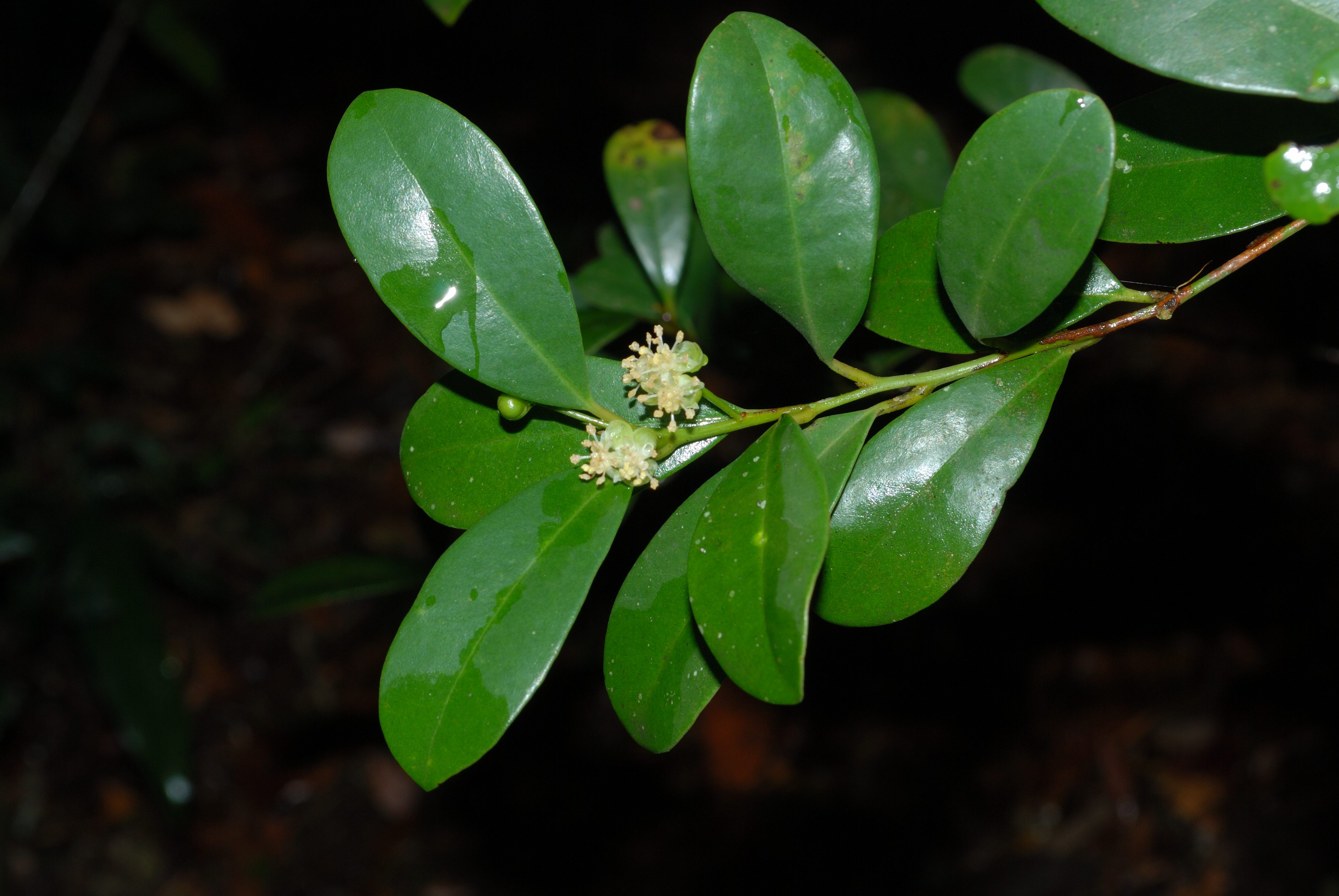
|
OUTREACH AND EDUCATION
A workshop on Linking Robotics, Citizen Science and Remote Sensing to Advance Water Science in Data-Scarce Regions, was held at ATREE, Bangalore, on Friday, June 12, 2015. This workshop was co-sponsored by ATREE, the University of California Berkeley, and the University of Illinois at Urbana Champaign. The objective of the workshop was to improve understanding and find solutions to critical water challenges in regions where historical and observational data are limited, by leveraging recent advances in sensing and data acquisition technologies, and data management and visualisation platforms, in ways that are relevant to different user groups. Participants included 28 researchers from ATREE, IISc, UC Berkeley, UIUC, large technology companies like Microsoft, Wipro, and IBM, and groups interested in citizen science like Yuktix, Biome, Caddisfly, AKNPS, and Arghyam. The morning session consisted of two panel discussions: the first panel focused on sensors and technologies, while the second panel focused on end critical data needs, and the opportunities created by new visualization, sensing and data analysis and management tools. In the afternoon, participants broke out into groups to brainstorm solutions to address self-identified critical challenges. The brainstorming session resulted in four concrete workable low-cost solution approaches for rainfall measurement, groundwater monitoring, urban lake quality management and urban stream pollution monitoring.
ATREE conducted the Spotting Alien Invasive Species (SPAIS) campaign, which invited Individuals and organizations across the country to submit observations on a list of 20 target invasive species from their local area. The campaign was conducted throughout the month of August and witnessed enthusiastic participation. The group has now aggregated over 785 observations from across the country, of which, 60% (473) have been uploaded during the August campaign. Karnataka leads the states, accounting for about 40% of the uploads, followed by Tamil Nadu (24%), Puducherry (13%), Maharashtra (7%) and Kerala (5%). The campaign had 96 members by the end of August, of whom 48 posted observations. An analysis of the uploaded observations revealed that only 35% were of species mentioned in the SPAIS list. However, 65% of the observations were defined as invasive species as determined by Khuroo et al. in their article published in 2012, “Alien flora of India: taxonomic composition, invasion status and biogeographic affiliations,” in the journal Biological Invasions, volume 14, pages 99–113. This led to a revision of the SPAIS list in an effort to feature the species mentioned in the Khuroo list. A total of 284 observations were recorded, of which the most observed included Lantana (Lantana camara), Congress Grass (Parthenium hysteroparus) and Siam Weed (Chromolaena odorata).
|
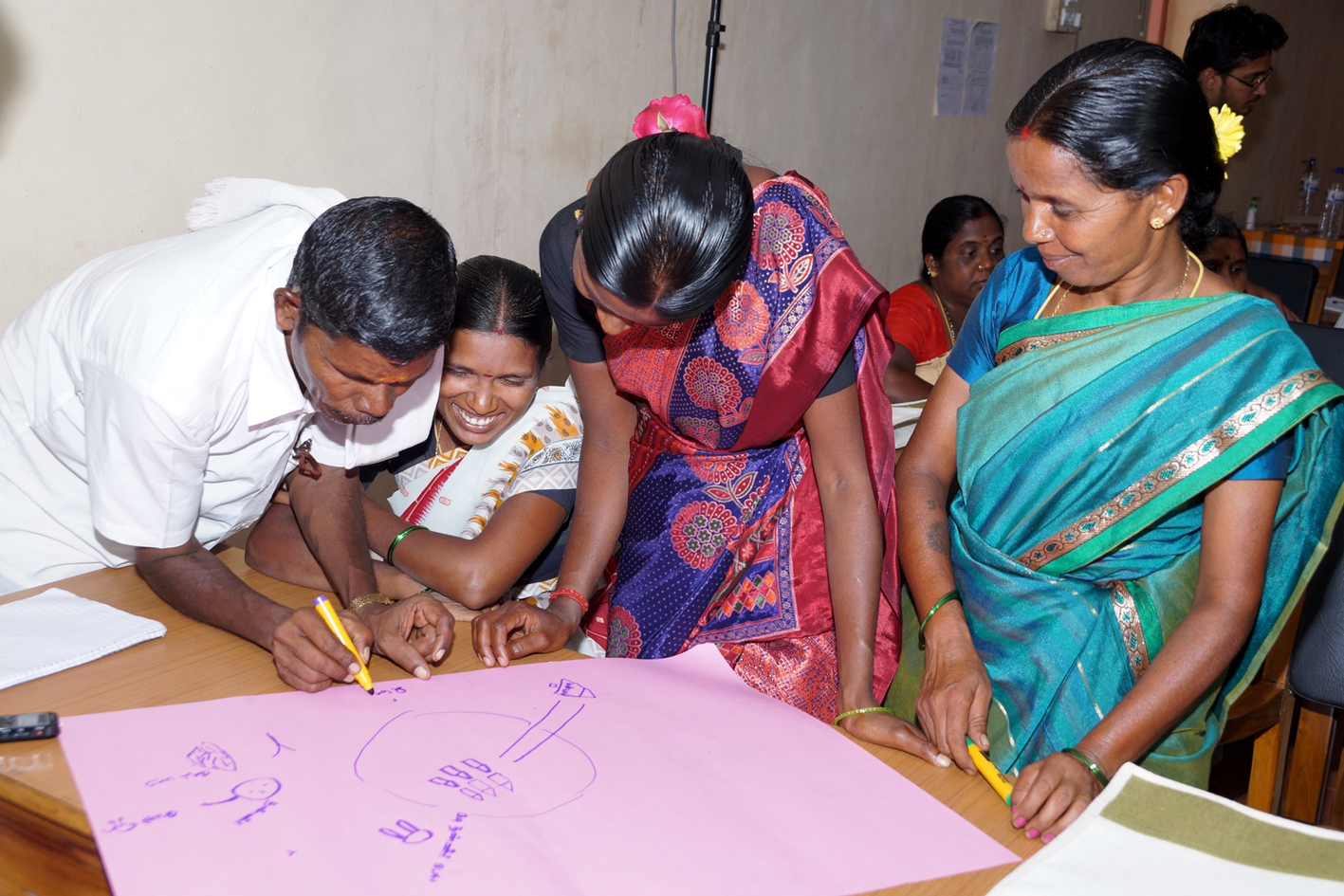
The ATREE-ASSAR team organized its first stakeholder engagement workshop on the 30th of September 2015 at the Regional Institute for Rural Development, Bhavanisagar, Erode district, Tamil Nadu state. The primary goal of the workshop was to bring together representative stakeholders from the villages on the northern bank of the Moyar River. The one-day consultation was led by Dr. Johny Stephen, Ms. Revathy G, Ms. Divya Solomon, Drs. R. Venkitachalam, Milind Bunyan, Jagdish Krishnaswamy and Shrinivas Badiger of the ATREE-ASSAR team. This stakeholder engagement workshop aimed to disseminate key messages from the research diagnostic phase of the project to the community, develop an understanding of community livelihood dynamics and natural resource dependence in these areas (this includes agriculture and NTFP collection practices in the region) and identify and understand climatic and non-climatic risks to current livelihood practices. Dotted with tribal hamlets and villages located within the Sathyamangalam Tiger Reserve, public access to these areas are heavily restricted by the state government. Fifteen representatives from five villages in the region attended the workshop, with participants comprising village heads and women leaders of Self Help Groups (SHG’s) in the region. The area coordinator of WWF (World Wildlife Fund) also participated and assisted in stakeholder group activities. Stakeholder engagement workshops during the course of the project are of strategic importance to build and maintain a good rapport with communities. These engagements are critical to the research process as they incorporate community’s insights and contributions to research that are grounded and participatory. The core set of activities included two participatory exercises –the first involved mapping local resources, history of its benefits to the community, its current status and threats, and the second described the local cropping seasons, calendar and patterns. The team also held a short activity to help convey the concept of adaptation to multiple stressors.
A course on “State and Civil Society in Development and Environmental Governance in India- In context to Vembanad Lake” was organized from September 8th-11th 2015 by CERC-ATREE for the students of International Environment and Development Studies, Norwegian University of Life Sciences.
The students were given orientation on various governance challenges in Vembanad’s multi-stakeholder system. Course was coordinated with Dr. Darley Jose Kjosavik and Jojo T.D. As part of the course, students got to interaction with Grama Panchayats, District Panchayats, local communities-fishers, clam and farmers. Majority of the classes were taken by Jojo T.D and Ashish Mathew George. Along with Lake Protection Forums, the students from the Norwegian University supported the community to establish a fish sanctuary in Vembanad Lake.
|
ATREE held the Annual Work Seminar (AWS) between 4th and 7th August 2015. The AWS initiative provides a once-a-year platform for researchers and practitioners at ATREE to communicate, learn and receive critical appraisal and constructive feedback of their work conducted at ATREE. As part of AWS, ATREE held a range of events including workshops, panel discussions, talks and presentations. It is an event where Ph.D. students, research associates and representatives of Community Conservation Centers (CCCs) can communicate the findings of their work, achievements and discuss potential work proposals with the entire ATREE research community for evaluation and inputs.
Mathivanan M, Field Coordinator of the Agasthyamalai Community-based Conservation Centre (ACCC), presented a paper 'Bats in Ancient Temples: Influence of Micro Habitats and Landscape features on Bat Occupancy and Abundance' at the 3rd International Southeast Asian Bat Conference, held in Sarawak, Malaysia between 14-17 August. Earlier in May, he received a travel grant of USD 1,200 from Conservation Leadership Programme (CLP) to attend this conference.
Anirban Datta Roy, PhD student (batch 2009), presented a poster titled ‘Fallow hunters: Spatio-temporal dynamics of large mammal hunting in a shifting cultivation landscape in Arunachal Pradesh, India,’ at the International Congress for Conservation Biology & European Congress for Conservation Biology (organised by the Society for Conservation Biology) in Montpellier, France, held between 2nd August - 6th August, 2015. Anirban’s poster elucidated his work with the Adi tribe in Upper Siang, Arunachal Pradesh, where he has been studying the spatial and temporal patterns of mammal hunting as part of his PhD research.
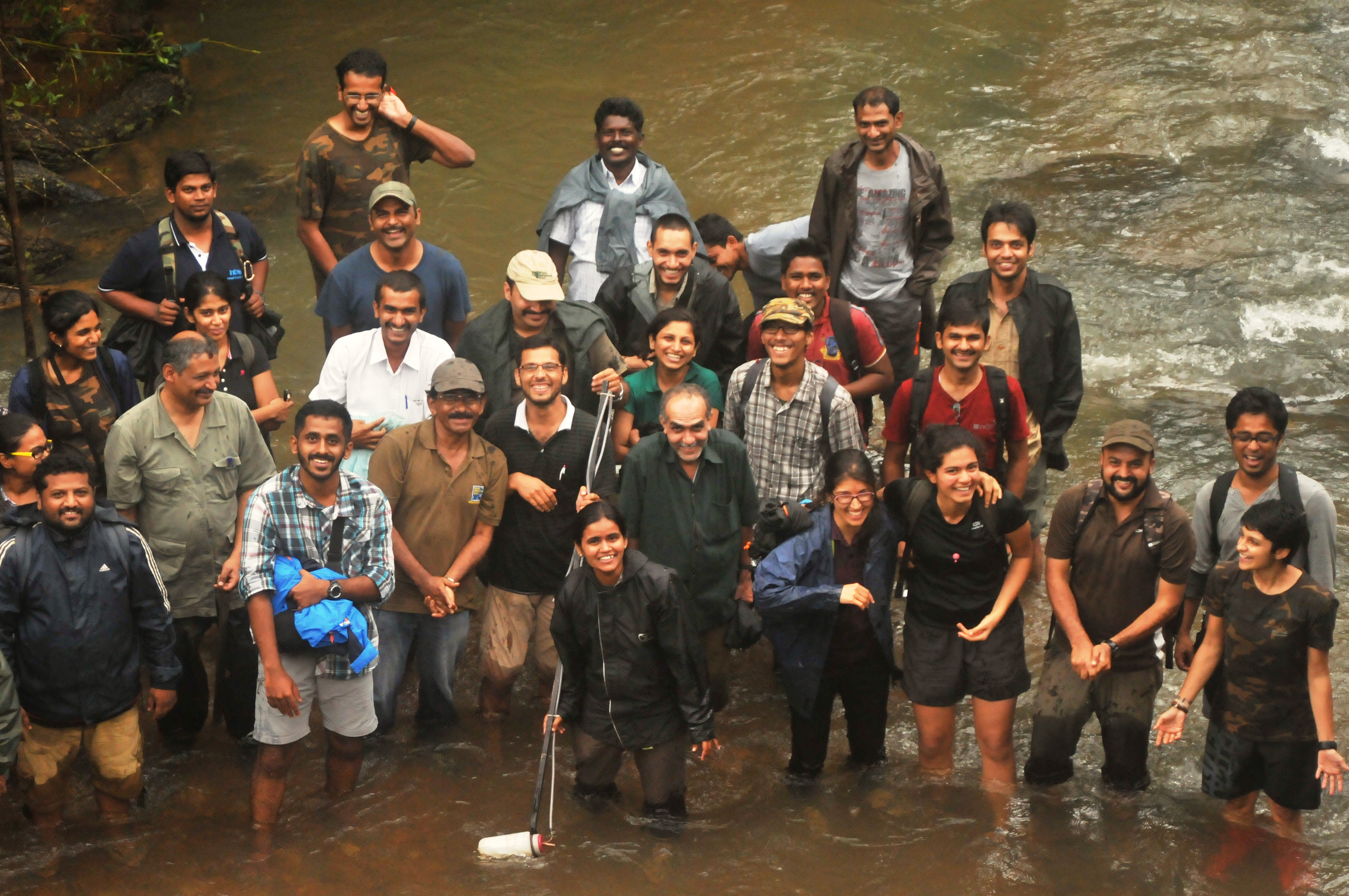
The Hydrologic and carbon services in the Western Ghats project, which straddles both the Ecosystem and Human Wellbeing programme as well as the Land, Water and Livelihoods programme, conducted a training workshop in field hydrology between 13-15 August. The workshop aimed to introduce the participants to “state-of-the-art” approaches and techniques to provide a foothold in basic concepts in hydrology. The workshop held Talks, Presentations, discussions, field exercises and practical lab sessions, to train 24 individuals (14 representing various organizations working and teaching in the field of hydrology and 10 Master's level students from the National Centre for Biological Sciences, Bangalore). Additionally, 55 undergraduate students of the Sirsi College of Forestry also underwent a one-day training workshop on field hydrology methods, followed by a theoretical lecture session, delivered by Dr Jagdish Krishnaswamy. The field session trained students to measure stream profile and velocity. They were also shown how to measure discharge using salt dilution technique.
|
|
Rinan Shah (PhD batch 2015) participated at the International Conference on Water, Megacities and Global Changes in Paris, held between the 1st and 4th December, 2015. She was selected by the Scientific Committee of the Science and Technology Service, French Embassy in India, based the research description of her PhD work. The organization committee of the conference included International Hydrological Programme (UNESCO-IHP) and ARCEAU IdF.
FUNDING AND PARTNERSHIP
Rajesh Thadani, on behalf of the Tata Social Welfare Trust, spent 3 days at ATREE interacting with faculty and senior management to gain a better insight into the activities supported by the Trust.
NEW
Journal Articles
Sijapati Basnett, B., A. Martin, N.D. Rai, and C. Smith-Hall (lead authors). Drivers of forests and tree-based systems for food security and nutrition. In: Forests,Trees and Landscapes for Food Security and Nutrition: A Global Asessment Report (eds. Vira, B., C. Wildburger, and S. Mansourian). Coordinating lead author: Kleinschmit, D.; Contributing authors: Dawson, N.M., G. Hickey, H. Neufeldt, H.R. Ojha, and S.Z. Walelign.
Krishnan, S., C.L. Pastore, and S. Temple (eds.). Unruly environments. Proceedings of the conference 'Unruly Environments: Ecologies of Agency in the Global Era'. Nehru Memorial Library and Museum, New Delhi; Rachel Carson Center for Environment and Society, Munich.
Das, A., H. Nagendra, M. Anand, and M. Bunyan. Topographic and bioclimatic determinants of the occurrence of forest and grassland in tropical montane forest-grassland mosaics of the Western Ghats, India. PLOS ONE 10(6): e0130566. doi:10.1371/journal.pone.0130566.
Ganesh, T., V. Aditya, G. Malla, and M.B. Prashanth. 2015. The 'empty forests' of the northern Eastern Ghats. Current Science 10 August 2015 109(3): 398-399.
Krishnan, S. Landscape, labor, and label: the Second World War, pastoralist amelioration, and pastoral conservation in the Nilgiris, South India (1929-1945). International Labor and Working-Class History 87/Spring: 92-110.
Subba, B., G. Ravikanth, and N.A. Aravind. Scaling new heights: first record of Boulenger's lazy toad Scutiger boulengeri (Amphibia: Anura: Megophryidae) from high altitude lake in Sikkim Himalaya, India. Journal of Threatened Taxa 7(10): 7655-7663.
Sustainable Green Religious Tourism: Ranthambhore Tiger Reserve. An emerging model with multi stakeholder engagement. Report on the work by ATREE and ARC (Alliance on Religions & Conservation) to integrate conservation and religion to protect tiger reserves and sacred sites in India has been placed in the library submitted to the Rajasthan Forest Department and Community Stakeholders 2014.
|
Aditya, V. 2015. Papikonda National Park: The jewel of the northern Eastern Ghats. Hornbill July-September: 36-39.
Niphadkar, M., G.F. Ficetola, A. Bonardi, H. Nagendra, and E. Padoa-Schioppa. 2016. Effects of landscape context on the invasive species Lantana camara in Biligiri Rangaswamy Temple Tiger Reserve, India. Tropical Ecology 57(1): 9-21. In print.
Subba, B., G. Ravikanth, and N.A. Aravind. 2015. Reply to Global high-altitude limits for amphibians by Tracie A. Seimon and Anton Seimon (2015). Journal of Threatened Taxa 7(11): 7851-7852. http://dx.doi.org/10.11609/JoTT.o4405.7851-2.
Bai, N.S., T.O. Sasidharan, O.K. Remadevi, and P. Dharmarajan. 2015. Biocontrol potential of Metarhizium anisopliae (Metsch.) Sorokin (Deuteromycotina: Hyphomycetes) against Ailanthus defoliator, Eligma narcissus (Cram.). Journal of Tropical Forestry and Environment 5(1): 47-58.
In the News
State of water pipelines a health risk. The Times of India. July 6, 2015. Radheshyam Jadav; FEJI-ATREE Media Fellow 2015.
Smarter city needs better ecosystem. The Times of India. July 16, 2015. Radheshyam Jadav; FEJI-ATREE Media Fellow 2015.
Health hazard - Agri wastewater enters food cycle. The Times of India. August 3, 2015. Radheshyam Jadav; FEJI-ATREE Media Fellow 2015.
The secret life of bugs. Live Mint. August 8, 2015. Padmaparna Ghosh; FEJI-ATREE Media Fellow 2015.
Insects can contribute to food security. The Times of India. August 9, 2015. Radheshyam Jadav; FEJI-ATREE Media Fellow 2015.
What a temple can do to a forest. The Hindu Business Line. August 11, 2015. Pankaj Sekhsaria; FEJI-ATREE Media Fellow 2015.
Reality boom in serene outskirts. The Times of India. August 12, 2015. Radheshyam Jadav; FEJI-ATREE Media Fellow 2015.
Why fathers should take lessons from this frog. Scroll.in. August 12, 2015. By Padmaparna Ghosh; FEJI-ATREE Media Fellow 2015.
Why it's batty to paint the walls of Tamil Nadu's stone temples. Scroll.in. August 12, 2015. Padmaparna Ghosh; FEJI-ATREE Media Fellow 2015.
Joint efforts required for restoration of degraded lands. The Times of India. August 13, 2015. Radheshyam Jadav; FEJI-ATREE Media Fellow 2015.
This sanctuary for blackbucks in Tamil Nadu has been taken over by dogs and cows. Scroll.in. August 15, 2015. Padmaparna Ghosh; FEJI-ATREE Media Fellow 2015.
|
Arkavathy river not drying because of declining rainfall or blockages. The Times of India. August 16, 2015. Radheshyam Jadav; FEJI-ATREE Media Fellow 2015.
Sewage treatment in Bengaluru inefficient: ATREE. The Times of India. August 16, 2015. Radheshyam Jadav; FEJI-ATREE Media Fellow 2015.
Democratic conservation of biodiversity is must. The Times of India. August 17, 2015. Radheshyam Jadav; FEJI-ATREE Media Fellow 2015.
Land snails in bright hues need study for protection. The Times of India. August 31, 2015.
Vembanad Lake is showing us the future of conservation in India. Scroll.in. September 11, 2015. Padmaparna Ghosh; FEJI-ATREE Media Fellow 2015.
Talks@ATREE
Sandesh Kadur. A journey into India's mountains of the monsoon. July 1, 2015.
Chetan B. Singai. (Mis)alignment in university governance: analysing the diversity in 'frames of communication'. July 3, 2015.
Narendran Kodandapani. Spatial pattern of disturbances and scale based conservation intervention measures in the tropics. July 17, 2015.
Meenakshi Umesh. Sustainability as a way of life. July 24, 2015.
Ram Fishman. When water runs out: scarcity, adaptation and migration in Gujarat. July 27, 2015.
Pranietha Mudliar. Heterogeneity and collective action: institutions in India and the United States. July 31, 2015.
Sundar Sarukkai. Philosophy of/and interdisciplinarity. August 24, 2015.
Georgina Cundill. Protected areas as sources of cultural ecosystem services: whose culture and at whose cost? August 31, 2015.
Suhel Quader. How to be a successful ecologist. September 14, 2015.
Xuehua Zhang. Enforcing environmental regulations in China: role of citizens, courts, and agencies. September 21, 2015.
Maria Thaker. Dewlaps in the wind: unexpected cascades from clean energy. September 28, 2015.

|
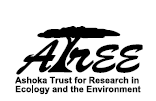 www.atree.org
www.atree.org
|
Head Office
Bengaluru
Royal Enclave, Sriramapura
Jakkur Post, Bengaluru 560 064
Tel: +91-80-23635555
Fax: +91-80-23530070
Regional offices
Eastern Himalayas
Khangsar House
Above Brahmakumari, Development Area
Gangtok 737101
Tel: +91-3592-206 403
New Delhi
C-86, 2nd floor,
B K Dutt Colony,
New Delhi 110003
Tel no: 011-24603134
Governing Board
Dr. Kamaljit S. Bawa (Chairman)
Dr. K. N. Ganeshaiah
Dr. R. Uma Shaanker
Mr. Darshan Shankar
Ms. Rohini Nilekani
Dr. Surinder M. Sehgal
Ms. Seema Paul
Ms. Pheroza J. Godrej
Dr. K. S. Jagadish
Mr. A. N. Singh
Dr. S. Natesh
Dr. Ganesan Balachander (ex-officio)
Dr. Bejoy K Thomas (faculty representative)
Executive Committee
Dr. Ganesan Balachander (Chair)
Dr. Ankila Hiremath
Dr. Abi Tamim Vanak
Dr. Sharachchandra Lele (ex officio)
Dr. Jagdish Krishnaswamy (ex officio)
Dr. Nitin Rai (ex officio)
|
Advisory Board
Pl note: * will also serve on the Faculty Advisory Committee
* Dr. Vijay Raghavan, Director, National Centre for Biological Sciences, Bengaluru
Dr. Raghavendra Gadagkar, INSA SN Bose Research Professor and JC Bose National
Fellow, Centre for Ecological Sciences, Bengaluru
* Dr. Amita Baviskar, Associate Professor, Institute of Economic Growth, Delhi
* Dr. Navroz K. Dubash, Senior Fellow, Centre for Policy Research, New Delhi
* Dr. Gita Sen, Professor, Centre for Public Policy, Indian Institute of Management, Bengaluru
Mr. Raj Khoshoo, Senior Vice President, Siemens PLM, CA, USA
Ms. Kalpana Sharma, independent journalist, Mumbai
Dr. Ravi Chopra, Director, People’s Science Institute, Dehradun, Uttarakhand
* Dr. S. P. Singh, Former Vice Chancellor,
Advisor, State Planning Commission,
Government of Uttarakhand, Dehradun,
Uttarakhand
Convenors and Programme Leaders
Dr. Jagdish Krishnaswamy,
Ecosystem Services and Human Well-being
and Convenor, Suri Sehgal Centre for
Biodiversity and Conservation
Dr. Sharachchandra Lele,
Forests and Governance and Convenor,
Centre for Environment and Development
Dr. Priyadarsanan Dharma Rajan
and Dr. Ankila Hiremath,
Ecosystems and Global Change
Dr. Shrinivas Badiger
Land Water and Livelihoods
Academy
Dr. Nitin Rai,
Convenor, Academy for Conservation
Science and Sustainability Studies
This newsletter has been put together from reports by ATREE folk. Design by Shiva Subramanya Editing by Aditya Harikrishnan, and Ganesan Balachander.
|
|

